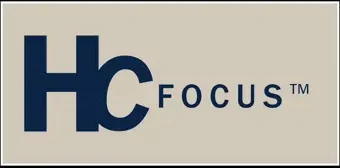In the US healthcare system, the path to widespread adoption of innovative medical technologies hinges on a crucial gatekeeper: payors. Both government programs like Medicare and Medicaid, overseen by the Centers for Medicare & Medicaid Services (CMS), and private insurance companies determine coverage and reimbursement for new technologies. Understanding how these decisions are made is vital for innovators to navigate this complex landscape and drive successful adoption.
The Payor Decision-Making Process
- Clinical Evidence: Payors primarily assess the clinical validity and utility of a new technology. This involves scrutinizing data from clinical trials to determine if the innovation offers a significant improvement over existing options.
- Cost-Effectiveness: Beyond clinical benefit, payers evaluate the cost-effectiveness of the technology. This analysis considers the cost of the innovation compared to the potential savings in terms of reducing hospitalizations, surgeries, or medication use.
- Budgetary Impact: Payors must consider the budgetary impact of covering a new technology. This includes the cost of the technology itself, as well as potential downstream costs associated with its use.
- Comparative Effectiveness: Payors often compare the new technology to existing treatment options to determine its relative value proposition.
Engaging Early with Payors: A Key Strategy for Innovators
Early and ongoing dialogue with payors, both CMS and private insurers, is crucial for innovators. This allows for:
- Tailoring Value Proposition: By understanding payor priorities, innovators can refine their value proposition to highlight the technology’s cost-effectiveness and potential to improve patient outcomes.
- Addressing Concerns Early: Proactive engagement allows innovators to anticipate payor concerns about the technology’s efficacy or budget impact and address them proactively.
- Gathering Data to Support Coverage: Collaboration with payors can help innovators identify the data needed to demonstrate the technology’s value proposition and expedite coverage decisions.
Innovation-Friendly Payors
Certain private insurers have a history of being more receptive to innovative technologies. These payors might be:
- Large, National Insurers: Due to their size and diverse patient populations, these insurers may be more willing to invest in innovative technologies with the potential for broad application.
- Payors Focused on Specific Patient Populations: Insurers catering to specific disease areas might be more open to innovative technologies that address unmet needs in that population.
- Value-Based Insurers: Payors who have adopted value-based care models might be more receptive to innovative technologies that demonstrate cost savings alongside improved patient outcomes.
Risk-Averse Payors
Some payors might be more risk-averse when it comes to covering new technologies. These payors might be:
- Smaller, Regional Insurers: With smaller patient pools, some insurers may be more cautious about adopting new technologies with uncertain long-term outcomes.
- Public Payors: Government programs like Medicare and Medicaid often have stricter budgetary constraints and may be more hesitant to cover expensive new technologies without clear evidence of cost-effectiveness.
Medicare typically offers easier coverage for tests and devices compared to private insurers and Medicaid. However, challenges arise with private payors adhering to Medicare’s coverage policies, particularly for their Medicare Advantage (MA) members. When private payors align their MA policies with Medicare guidelines, they usually include a positive coverage section for MA plans based on Medicare recommendations. Unfortunately, their commercial policies often remain restrictive, making it much harder to secure coverage for non-MA members. - Laboratory Benefit Management and Radiology Benefit Management: LBMs and RBMs are often cautious about adopting new technologies due to financial risks and potential legal issues. They require strong outcomes and robust HEOR data to ensure safety and value before proceeding
Conclusion
The US healthcare payor landscape presents a complex challenge for innovators. By understanding how payors make coverage and reimbursement decisions, and by engaging early and strategically with both CMS and private insurers, innovators can increase their chances of successful adoption for their groundbreaking technologies.
How HcFocus Can Help
Contact HcFocus’ experts for a 30-minute free consultation. and collaborate on how their team partners with your team to gain short-term reimbursement as well as develop your path to long-term successful coverage and reimbursement.
References:
- Health Insurance Coverage and Reimbursement Decisions by American Academy of Actuaries
- Complementing Coverage and Reimbursement Decisions With Multi-Criteria Decision Analysis by American Journal of Managed Care
